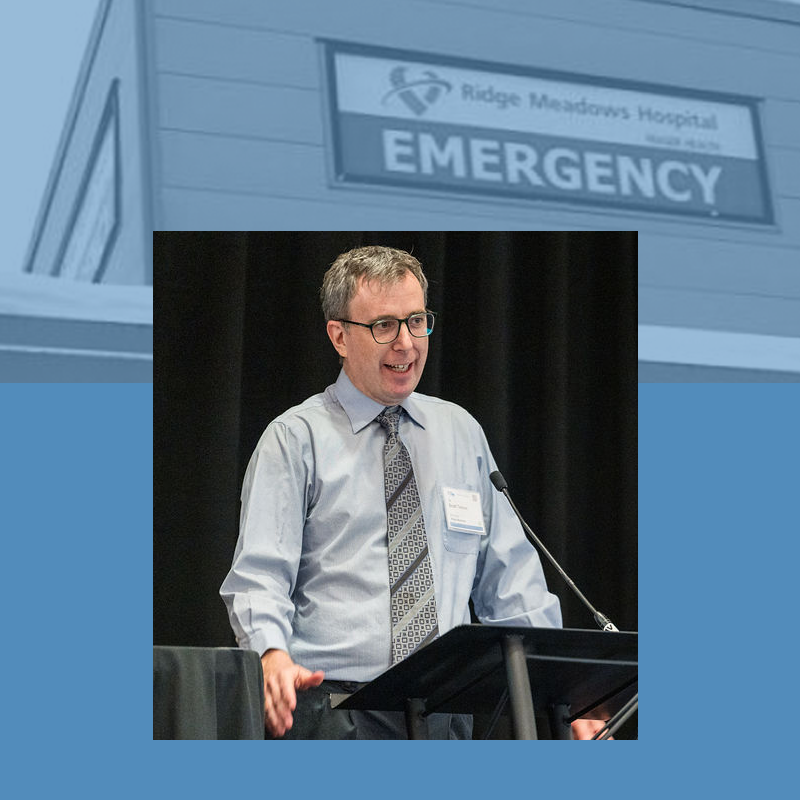
2024 Lightning Talk: Emergency Room Efficiency Council – Dr Scott Tancon (photo), Ridge Meadows Hospital Physician Engagement Society
A team at Ridge Meadows Hospital has created an Emergency Room (ER) Efficiency Council as an effective way to improve access and flow in the face of increasing patient visits and staffing challenges.
Taking grassroots action for impact
The group's first project was created to address bed blocks. Emergency room (ER) beds were increasingly being occupied by inpatients due to hospital space shortages, affecting the assessment of ER patients.
Dr Scott Tancon joined together with administrators and ED leaders to brainstorm changes to make the space more efficient.
They realized that frontline staff needed to be engaged from beginning to understand why changes were being made, mitigate unintended consequences, and overcome resistance.
How the Council works
- The council met with nurses, unit clerks, ward aides, and housekeepers to compile a list of areas they felt could be improved.
- Ideas were prioritized by the group and brought to the management team’s monthly quality improvement meetings. Some issues were easily solved, while other areas required more extensive renovations.
- A solution involved moving three to four admitted patient beds out of the zone, ordering new furniture, and moving privacy curtains and signage.
- The changes have improved flow of patients, and clarity for staff, patients, and families on the ED journey.
Examples of change
- Changes to triage areas and staffing schedules based on volume in different areas at different times, and patient flow processes.
- Revamp of the trauma area and a dedicated pediatric room.
- Reorganization of space/desks, relocating the unit clerk between physicians and nurses.
- Creation of an internal waiting room zone and external departure lounge, to get patients under the observation of nurses sooner.
Improvements continue
With everyone feeling like part of a team, the Efficiency Council has kept the momentum going, and meets regularly to continue ongoing improvements.
- Committee representatives now include unit clerks, cleaners, nurses, physicians, patient care coordinators, the site health authority liaison, and anyone else with interest and capacity.
- All voices are welcome and anyone can contribute ideas. Participants who raise an issue also need to come with a solution in mind.
Lessons and success factors
- Everyone feels some agency in their practice.
- An open invitation to join the Council based on interest is more effective for buy-in and participation than mandatory representation.
- Big renovations are not always needed to make a big impact, simple changes can be highly effective.
- Physician time is supported Facility Engagement-funded sessionals.
- The Clinical Nurse Manager of the ED uses dedicated department funds to pay for front-line staff time.
“There were always people that saw angles of things that we didn't consider. Even the cleaners or the unit clerks would say “this doesn't work for me” because of this reason, and we didn't consider that. So that's how this all evolved into a bigger council. It was essentially to try to generate grassroot ideas from all the frontline staff.”
“The biggest impact is empowering the frontline staff to be part of this, the enthusiasm for it was great and things got done a lot faster. When you have the frontline staff doing it, they are more engaged, and willing to do a lot of the legwork needed.” – Dr Scott Tancon
MORE RESOURCES
![]()
 |
 |
 |

